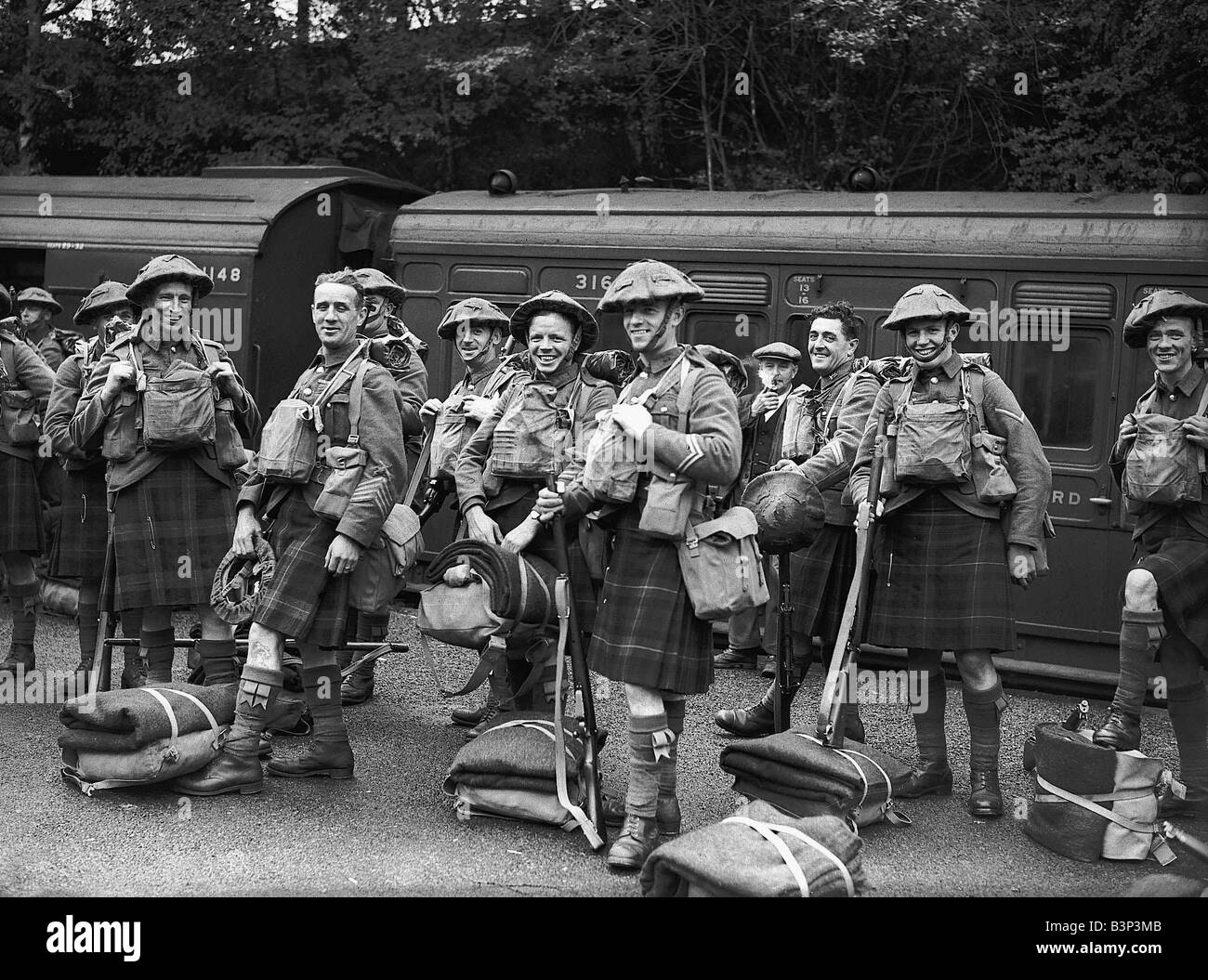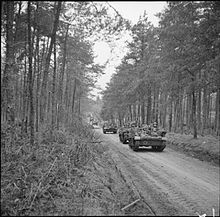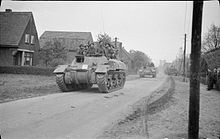

The Seaforth Highlanders (Ross-shire Buffs, the Duke of Albany’s) was a line infantry regiment of the British Army, mainly associated with large areas of the northern Highlands of Scotland. The regiment existed from 1881 to 1961, and saw service in World War I and World War II, along with many smaller conflicts.

The 1st Battalion, which was stationed in Shanghai when war broke out, was deployed to Malaya in November 1940, and then to India. It joined the 1st Indian Brigade in the 23rd Indian Division in May 1942, and served in the Burma Campaign until 1945.[22]
Universal Carriers of the 2nd Battalion, Seaforth Highlanders during Operation Veritable in the Reichswald forest, Germany, 10 February 1945
The 2nd Battalion went to France as part of the 152nd Brigade in the 51st Highland Division with the British Expeditionary Force (BEF) in October 1939 but was captured at Saint-Valery-en-Caux during the Battle of France in June 1940.[22] The 2nd Battalion was reconstituted, as part of the reconstituted 152nd Brigade, 51st (Highland) Infantry Division, and served in the Middle East, fighting in the Second Battle of El Alamein, and the subsequent Tunisia Campaign, and in the Allied invasion of Sicily.[22] In late 1943 the 51st (Highland) Infantry Division returned to the United Kingdom and then took part in Operation Overlord, the Allied invasion of Normandy, taking part in Operation Totalize and Operation Astonia, the capture of the French port of Le Havre.[22] The battalion later participated in Operation Veritable, Operation Plunder and the invasion of Germany.[25]

The 4th Battalion also went to France as part of the 152nd Brigade in the 51st Highland Infantry Division with the BEF in January 1940 and was captured at Saint-Valery-en-Caux in June 1940.[26]
After home service with the 9th (Highland) Infantry Division,[27] in 1940 the 5th Battalion joined the reconstituted 152nd Brigade, 51st Highland Division,[28] and served in the Middle East, in the Allied invasion of Sicily in July 1943, in the Allied invasion of Italy in September 1943 and then in North-West Europe.[29]
Kangaroos carrying men of the 7th Battalion, Seaforth Highlanders in Moergestel, Netherlands, 26 October 1944.
The 6th Battalion was a 2nd Line TA unit that was transferred to the 17th Infantry Brigade, part of the 5th Infantry Division. It served with the division throughout the war in Sicily, Italy, and finally in Northwest Europe.[30]
The 7th Battalion was a 2nd Line TA unit that originally served with the 26th Infantry Brigade, part of the 9th (Highland) Infantry Division, and later transferred to the 46th (Highland) Infantry Brigade in the 15th (Scottish) Infantry Division and deployed to France in June 1944: it saw action in Operation Epsom and then served in North-West Europe.[31]
The 8th and 9th battalions were raised early in the war, and served in a home defence and reserve role. In December 1941, the 8th was redesignated the 30th battalion, Seaforth Highlanders.[32]

Jurek Model A

50 round



